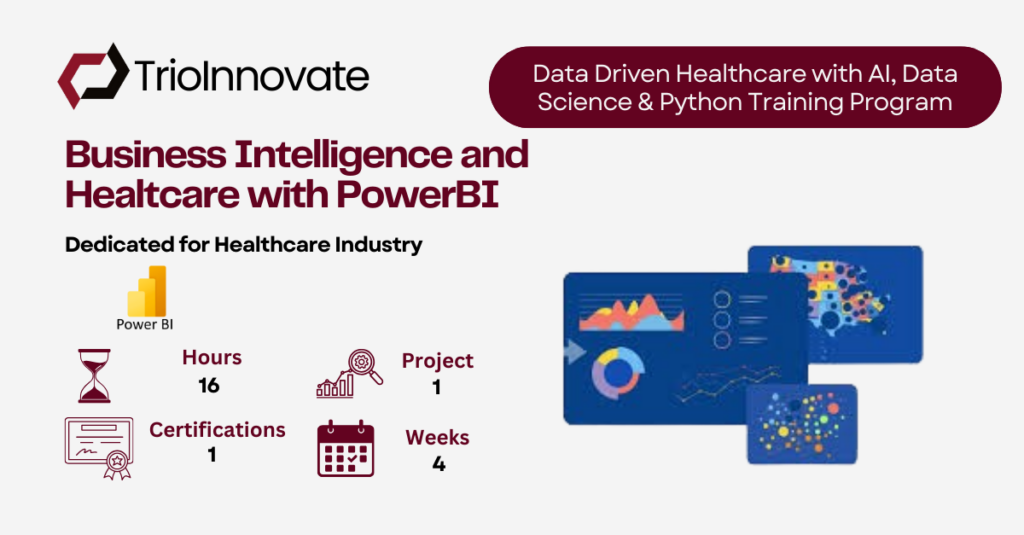Business Intelligence and Healthcare with PowerBI (in progress)
Course Overview (in progress)
This course introduces Power BI as a powerful tool for business intelligence and healthcare analytics. Participants will learn to connect, visualize, and analyze healthcare data using interactive dashboards and reports. Topics include data modeling, DAX calculations, and best practices for storytelling with data. By the end of the course, students will be able to build insightful, data-driven reports to support decision-making in healthcare organizations.
Key Skills
- Supervised Learning Fundamentals (Classification & Regression)
- Python for Machine Learning (Pandas, NumPy, Scikit-learn)
- Key ML Algorithms (Linear Regression, Decision Trees, SVM, k-NN)
- Model Evaluation & Metrics (Accuracy, Precision, Recall, F1-Score)
- Data Preprocessing & Feature Engineering
- Hyperparameter Tuning & Model Optimization
Course Outline
Business Intelligence with PowerBI for Healthcare Professionals
Overview of Business Intelligence concepts
Lessons Objective
- Understanding Supervised Learning (Classification & Regression)
- Model Training & Evaluation
- Overfitting & Underfitting
PowerBI features and dashboard creation
Lessons Objective
- Working with Scikit-learn
- Data Handling with Pandas & NumPy
- Data Visualization using Matplotlib & Seaborn
Data analysis and visualization techniques specific to healthcare data
Lessons Objective
- Linear Regression
- Decision Trees
- Support Vector Machines (SVM)
- k-Nearest Neighbors (k-NN)
- Logistic Regression
Using PowerBI to improve decision-making and insights in the healthcare industry
Lessons Objective
- Performance Metrics (Accuracy, Precision, Recall, F1-Score)
- Train-Test Split & Cross-Validation
- Hyperparameter Tuning
- Feature Selection & Engineering
Projects in this course
In this project, you will apply supervised machine learning techniques to predict customer churn for a telecom company. Using a real-world dataset, you will:
- Preprocess the data (handling missing values, encoding categorical features)
- Train and evaluate models like Logistic Regression, Decision Trees, and k-NN
- Compare model performance using metrics like accuracy, precision, recall, and F1-score
- Optimize models through hyperparameter tuning
- Visualize insights with Matplotlib & Seaborn
By completing this project, you will gain hands-on experience in classification problems, model evaluation, and real-world data handling.

Course Duration:
10 Hours
Earned Skills:
Python, Problem Solving, Supervised Learning Algorithms
Earn Certification:
Earned a valuable certificate to boost your resume


